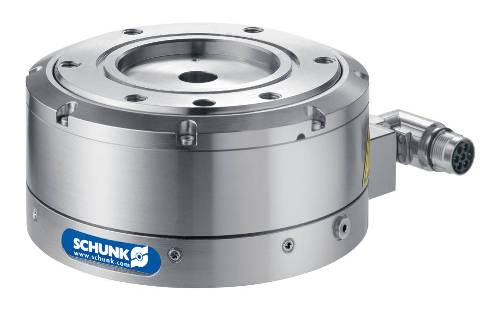SCHUNK’s new ERS rotary module is the descendant of the established STM module. With a center hole for cable feed-through and compact dimensions, the new rotary module has suitable preconditions to design compact and orderly aligned high performance systems.

The multi-purpose ERS rotary module can be utilized as a freely programmable rotary indexing table, as a rotation axis for grippers in gantries, or as a support for work piece for laser welding machines. It is very flexible and allows the approaching of any intermediate position at 0.02° of repeat accuracy. If it is utilized as a substitute for traditional pneumatic rotary modules, it considerably expands the range of usage and is capable of improving the energy efficiency of a plant.
The ERS module is offered in three different sizes with diameters of 135, 170 and 210 mm. At present, it is the most compact electric rotary module available in the market. The size 170 has 66 mm height and is able to reach 5 Nm of torque. The reliable fixation of individual positions can be ensured with an optionally integrated pneumatic holding brake. The key component of the module is a torque motor having a hollow shaft, which is highly reliable and enables the module to be wear-free, more compact and lightweight.
Unlike rotary modules with traditional servo motors, the new ERS module does not have additional interfering contours. In addition, elasticity as a result of friction and scope is not applicable, thus increasing dynamic, accurate, and positioning resolution. The ERS module demonstrates low noise, high accuracy and more efficiency when compared to servo motors. The module achieves 80% efficiency factor, thanks to negligible friction loss and significantly reduces operating costs owing to its high compact performance.
The ERS module is more flexible to users in terms of control and regulation strategies. In addition to a 560 V DC version for typical drives from Siemens or Bosch, a 48 V DC version is also offered for applications with the SCHUNK-Motion-Controller MCS-12. It is possible to use the module as a direct servo axis for a multi-axis system, as well as a stand-alone rotary module in special tasks.